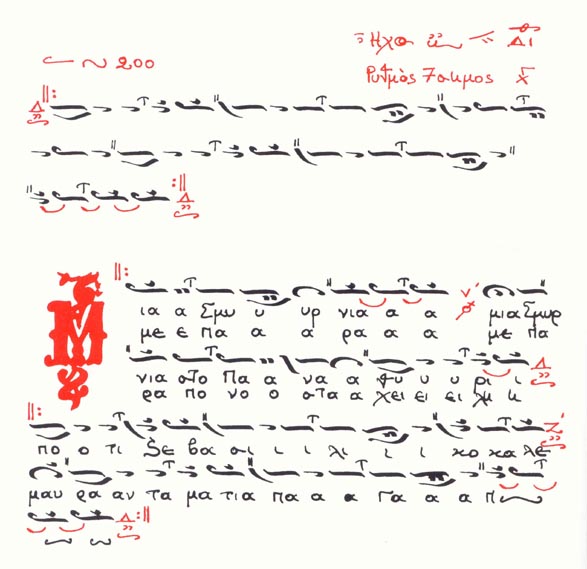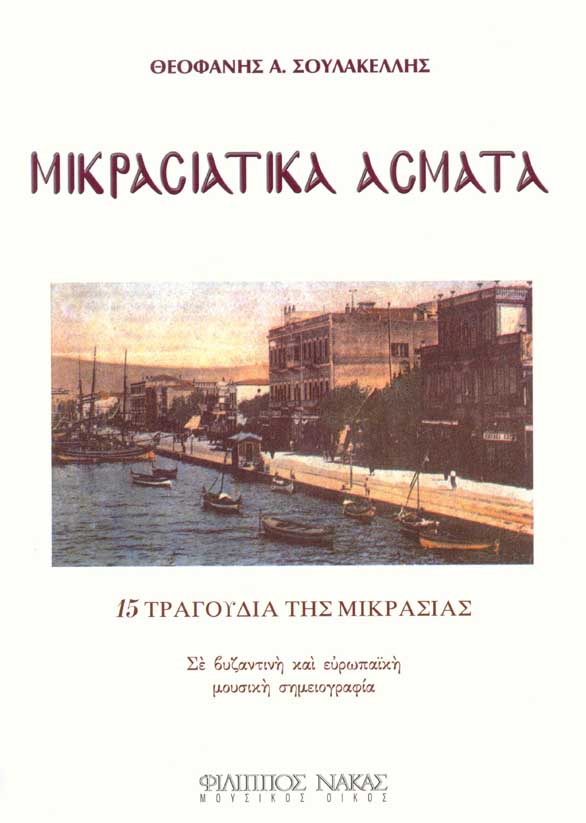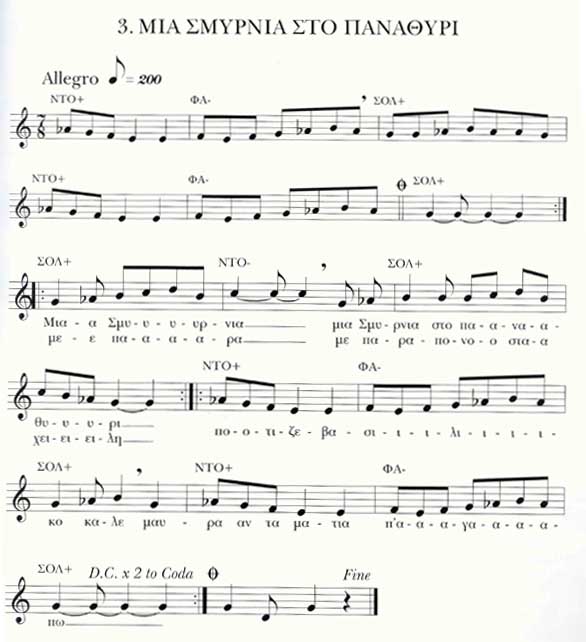 SMYRNA COMMEMORATIVE SERIES  The Music of Smyrna To listen to music from Smyrna in Real Audio format, click here  |
|
A person would have to travel in a time more than a century in the past to dissect the geographic, social, and celebratory elements of the framework in which traditional Greek music existed and was performed in the places of Asia Minor. Already, from the Byzantine epoch, Constantinople was the ethnic, religious and politico-intellectual center of Christian Hellenism, and from there emerged every intellectual movement for all of Asia Minor. In particular, the coast of Asia Minor was a natural area for forming a single landscape, from the standpoint of musical, poetic, and dance tradition. The dances are analogous: not mainland Tsamika and similar dances, but island syrta and balloi, kalamatiana syrta and hassapika, karsilama and zeibekika dances. As for the interweaving texture of the musical sounds, diatonic and chromatic of the soft and harsh sounds, there is a great variety, seeing that Constantinople, with its Byzantine and post-Byzantine schools of music, kept alive the polytonal system of ancient Greece, within Greek music, religious and secular. Seven-eighths rhythms for the kalamatiana, nine-eighths for the karsilamades and the zeibekika, four-eighths --slow -- for the sedentary songs and the serenades and -- quick -- for the syrta and hassapika, comprise the mosaic of rhythmical creation. The trichord Constantinopolitan lyra, the kanonaki, the ancient flute and now the clarinet, santouri, outi and laouto make up the recognized popular concert-troupe instrument complement. (Translation and adaptation by Mary Papoutsy of excerpt from Mikrasiastika Songs. 15 Songs of Asia Minor,with Byzantine and European musical notation. Soulakellis, Theophanes A. Athens: Philip Nakas Music House, 2000. Persons interested in obtaining copies of this book may contact Nakas Music Store in Athens directly at 13 Navarinou St., 106 80 Athens, Greece or by visiting the store's website.)
|
 |

